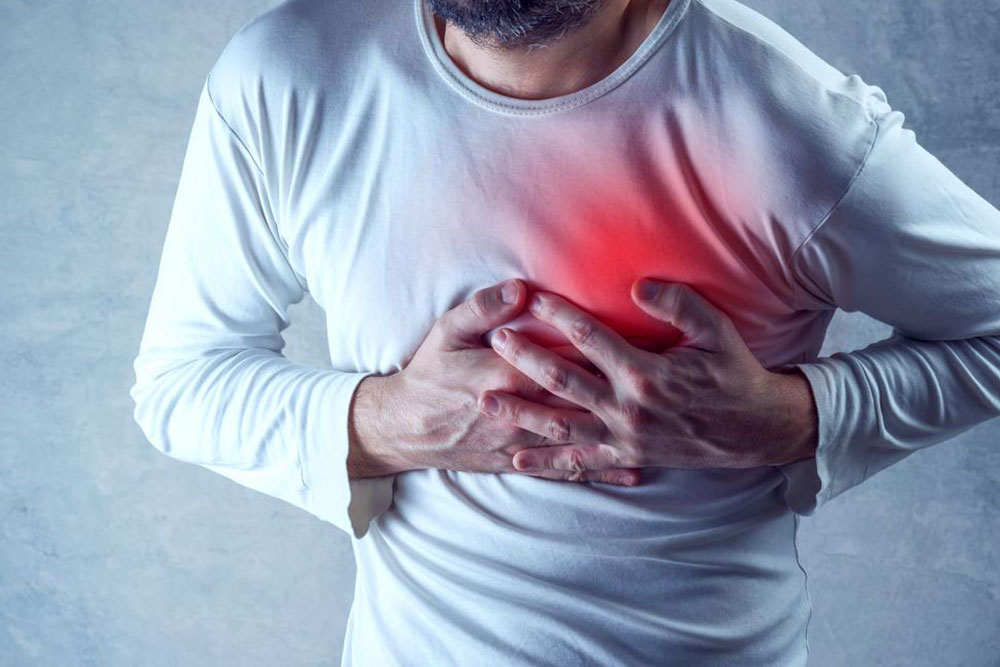Comprehensive Guide to Common Causes and Symptoms of Rib Discomfort
This comprehensive article explores the top causes of rib discomfort, including rib fractures, lung metastases, autoimmune diseases, and osteoporosis. It details symptoms, diagnosis, and treatment approaches for each condition, helping readers understand urgent and underlying health issues related to chest pain and rib problems. Clear, in-depth insights aim to promote awareness and encourage timely medical intervention for all kinds of rib pain scenarios, from injuries to complex diseases.

Understanding Key Symptoms and Causes of Rib-Related Health Issues
Rib discomfort is a common concern that can be caused by a wide variety of factors, ranging from traumatic injuries to complex medical conditions. Recognizing the key symptoms associated with different underlying causes is crucial for prompt and accurate diagnosis, leading to effective treatment options. This comprehensive guide explores the most prevalent medical issues linked to rib pain, providing detailed insights into their signs, symptoms, and severity levels. Whether you experience sudden, sharp pains or persistent discomfort, understanding these conditions can aid in seeking appropriate medical care promptly.
Rib Fracture: Recognizing Trauma-Induced Damage
One of the most immediate and noticeable causes of rib pain stems from fractures caused by blunt trauma or accidents. Ribs are relatively fragile and can crack or break due to falls, car accidents, or direct impacts. The hallmark symptoms of a rib fracture include sudden, intense pain that worsens with breathing, coughing, or movement. Patients often report dizziness, feelings of shock, or difficulty supporting action with their chest. Swelling, bruising, and deformity in the chest area can often be observed. In some cases, a rib fracture can be overlooked initially if symptoms are mild, but persistent pain should always prompt medical evaluation. Treatment typically involves pain management, rest, and sometimes immobilization, depending on the severity of the fracture.
Chronic Myelogenous Leukemia (CML): An Indirect Cause of Rib Discomfort
Chronic Myelogenous Leukemia (CML) is a form of blood cancer characterized by uncontrolled growth of white blood cells, primarily caused by genetic mutations involving chromosome translocation. While CML primarily affects blood and bone marrow, it can indirectly lead to rib pain. Patients may experience swelling in the abdominal region near the ribs due to enlarged spleen or lymph nodes, which can exert pressure on adjacent structures and cause discomfort. Symptoms of CML often include fatigue, weakness, weight loss, and night sweats. Diagnosing CML requires blood tests and bone marrow analysis, as symptoms vary across different disease stages. While not a direct cause, CML-related complications can manifest as rib discomfort, making early detection vital for better management.
Lung Metastases: When Cancer Spreads to the Ribs
Lung cancer has the capacity to metastasize, or spread, to other parts of the body, including bones such as the ribs. Rib pain associated with lung metastases often presents as persistent, dull or aching discomfort, sometimes accompanied by other symptoms like cough, wheezing, and shortness of breath. The spread of malignant cells to the ribs can weaken bones, leading to fractures or pathological fractures with minimal trauma. Detecting lung metastases requires imaging techniques such as X-rays, CT scans, or MRIs, along with biopsy procedures for confirmation. Managing metastases often involves a combination of chemotherapy, radiation therapy, or targeted treatments, with pain management being a key aspect of care.
Systemic Lupus Erythematosus (SLE): Autoimmune Connection to Rib Pain
Systemic Lupus Erythematosus (SLE) is a chronic autoimmune disease where the immune system mistakenly attacks healthy tissues, including joints, skin, and internal organs. Involvement of the rib area is common due to inflammation of the joints and tissues surrounding the ribs, leading to symptoms like chest pain, joint swelling, and general fatigue. Patients may also experience fever, skin rashes, or deformities if the disease progresses. The inflammation can cause pleuritis—an inflammation of the lining around the lungs—resulting in sharp chest pain that worsens with deep breaths or coughing. Managing SLE involves immunosuppressive medications, lifestyle adjustments, and regular monitoring to control symptoms and prevent complications.
Osteoporosis: Weakening Bones and the Risk of Fracture
Osteoporosis is a condition characterized by decreased bone density and weakened bone structure, making bones more susceptible to fractures even with minor impact. When ribs are affected, individuals may experience persistent or sharp pain following trivial injuries or even spontaneously in severe cases. Osteoporotic fractures of the ribs can be problematic, especially in aging populations or those with long-term medication use that impacts bone health. Early detection involves bone density scans and assessment of risk factors. Treatments focus on calcium and vitamin D supplementation, weight-bearing exercises, and medications that help strengthen bones to prevent future fractures and alleviate pain.
Pleurisy: Lung Lining Inflammation Leading to Chest Pain
Pleurisy is an inflammatory condition involving the lining of the lungs, known as the pleura. It is often caused by infections, autoimmune diseases, or exposure to certain medications. The hallmark symptom is a sudden, sharp chest pain that worsens with deep breaths, coughing, or sneezing. Patients may experience shallow breathing to minimize pain, alongside symptoms such as fever and general malaise if an infection is present. Fluid accumulation in the pleural space, known as pleural effusion, can also cause pressure on the ribs, intensifying discomfort. Treatment typically involves addressing the underlying cause, reducing inflammation with anti-inflammatory drugs, and managing pain effectively.
Costochondritis: Inflammation of Costal Cartilage
Costochondritis refers to inflammation of the cartilage connecting the ribs to the sternum. It is a common cause of chest and rib pain, especially in adolescents and adults under stress or after physical exertion. The pain can be sharp, aching, or burning, and often worsens with pressure applied over the affected area. Mild cases usually resolve spontaneously, but persistent or severe pain may require anti-inflammatory medications and symptom management. Recognizing costochondritis is important because its symptoms can mimic other more serious conditions, necessitating careful diagnosis to ensure appropriate treatment.





